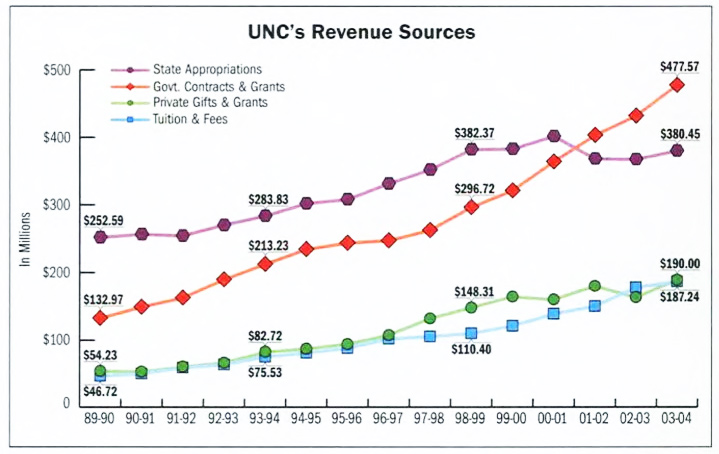- Membership
- Perks and Discounts
- Things To Do
- Resources
- News
- About
- Shop
Related Content
Respectfully Listening and Hearing
March 21, 2023
The Review asked GAA president Doug Dibbert ’70, who is retiring, to choose one “Yours...
Read MoreA Year of Transitions
Feb. 1, 2023
Carolina alumni and friends should remain proud of Carolina’s achievements, resolute about our challenges, saddened...
Read MoreIt’s Time — Thank You
Nov. 11, 2022
Several months ago, then-GAA-Board Chair Dana Simpson ’96 (’00 JD) and I discussed what may...
Read More-
2024
-
2023
-
2022
-
2021
-
2020
-
2019
-
2018
-
2017
-
2016
-
2015
-
2014
-
2013
-
2012
-
2011
-
2010
-
2009
-
2008
-
2007
-
2006
-
2005
-
2004
- Academics and Athletics
- Admissions
- Alumni Profiles
- Alumni Recognition
- Around Town
- Arts
- Books
- Campus Profile
- Campus Safety
- Carolina Alumni Awards
- Carolina Alumni Leadership
- Carolina Alumni Programs and Outreach
- Carolina Alumni Reunions
- Carolina Alumni Review
- Celebrations
- Championships
- College and Costs
- Commencement
- Coronavirus
- Discovery
- Extracurricular
- Faculty
- Faculty Awards
- For the People
- Go Heels
- Greek Life
- Hark the Sounds
- Higher Education
- Homecoming
- In Class
- In Memoriam
- Innovation and Technology
- Issues
- Object Lesson
- On View
- Our Treescape
- Philanthropy
- Podcast
- Public Service
- Race and Reckoning
- Research
- Sexual Assault
- Silent Sam
- Sports
- Structures
- Student Achievement
- Students
- Timelines
- Tuition and Financial Aid
- UNC Libraries
- UNC’s History
- Undergraduate Spotlight
- University Achievements
- University Awards
- University Budget Issues
- University Development
- University Leadership
- University News
- University Rankings
- What We Do
- Who We Are
- Young Alumni
- Yours at Carolina
Carolina's Continuing Partnership
Posted on Jan. 13, 2005
Doug Dibbert ’70
When I first encouraged South Building colleagues to develop and annually update the accompanying chart, we could not anticipate how Carolina’s principal funding sources would change over time. The growth to a combined total of$1.2 billion from $486.5 million over 15 years is impressive. This shared partnership of taxpayers and students, faculty, alumni and friends is unparalleled.
The escalating costs of research equipment and talent needed, particularly in the sciences, threaten the viability of many research universities. The University of Virginia today receives only 8 percent of its annual operating budget from state appropriations, prompting UVa, William & Mary and Virginia Tech to request to be designated “charter” universities. If granted, they would be permitted to set their own tuition and be freed of many state regulations. The University of Colorado, where 9 percent of the budget comes from Colorado taxpayers, recently was granted “enterprise status;’ meaning it no longer will be governed as other state agencies are.
 This chart affirms what Gene Nichol, dean of UNC’s law school, has claimed for some time— that “Carolina remains proudly public.” Over the past 15 years, despite two economic downturns, state appropriations have grown an average of 3.1 percent a year, and the $380.45 million in state appropriations for 2003-04 represented the income from an $8 billion endowment.
This chart affirms what Gene Nichol, dean of UNC’s law school, has claimed for some time— that “Carolina remains proudly public.” Over the past 15 years, despite two economic downturns, state appropriations have grown an average of 3.1 percent a year, and the $380.45 million in state appropriations for 2003-04 represented the income from an $8 billion endowment.
Most impressive has been the growth in grants and contracts — 9.6 percent a year, which today represents 126 percent of state appropriations. But as competition increases and federal funding plateaus, that growth may be challenged. Tony Waldrop ’74, UNC’s vice chancellor for research and economic development, has suggested that Carolina’s greatest opportunity for growth in research funding is from corporations. In that area, UNC is ranked 90th ($75.4 million in 2003-04); Duke is ranked first, and N.C State is 15th.
Alumni and friends, as during the Bicentennial Campaign, have been generous to the Carolina First campaign. Private gifts have grown at an annual rate of 9.8 percent over the past 15 years, today equaling nearly 50 percent of state appropriations. Similar growth has occurred in tuition and fees, at 10.5 percent a year; they now total slightly more than 49 percent of state appropriations.
The N.C Constitution specifies that “the General Assembly shall provide that the benefits of The University of North Carolina and other public institutions of higher education, as far as practicable, be extended to the people of the State free of expense.” As reflected in UNC’s pathbreaking new program, the Carolina Covenant — which this fall will expand from. the current 225 students by another 120 students — shows that access to Carolina remains a high priority. We also can be comforted that the average debt load among graduating seniors who borrowed dropped to $11,519 last year from $13,700 in 2000. (Meanwhile in the past decade, the average debt load nationally doubled to about $17,000.)
The special partnership among taxpayers and students, faculty, alumni and friends has built our University. That partnership also sustains its excellence as together we continue our quest to become America’s leading public university.
Yours at Carolina,

Douglas S. Dibbert ’70
© 2024 Carolina Alumni
